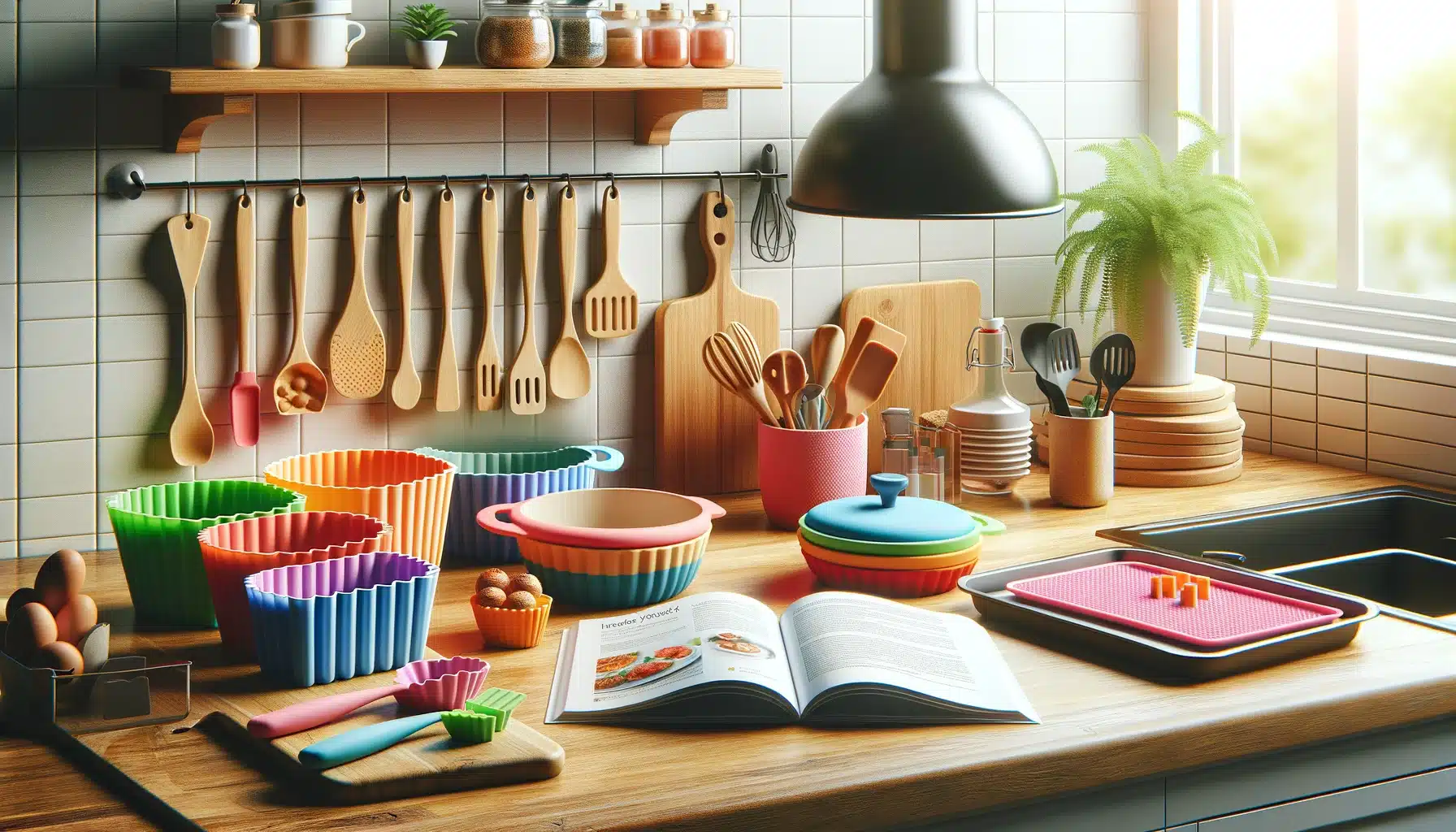Silicone vs Nylon Utensils – Which is Best for High Heat?

Cooking utensils play a crucial role in food preparation, and choosing the right material matters, especially when dealing with high temperatures. Both silicone and nylon are popular materials, but which one is best for high heat? In this guide, we’ll compare kitchen utensils nylon vs silicone to determine the most heat-resistant and durable option.
Heat Resistance: How Do They Compare?
One of the biggest considerations when choosing between kitchen utensils nylon vs silicone is their heat resistance. Nylon utensils typically withstand temperatures up to 400°F (204°C), making them suitable for most stovetop cooking tasks. However, prolonged exposure to high heat can cause nylon to melt or warp.
Silicone utensils, on the other hand, are designed to handle much higher temperatures, often up to 600°F (315°C). This makes them an excellent choice for cooking methods that involve direct heat, such as sautéing or baking. Additionally, silicone doesn’t degrade over time when exposed to heat, unlike nylon, which may become brittle.
Durability and Longevity
When comparing kitchen utensils nylon vs silicone, durability is another crucial factor. Nylon utensils are lightweight and sturdy, but they can crack or degrade over time, especially when repeatedly exposed to high temperatures or dishwashing cycles.
Silicone utensils are flexible, non-porous, and highly resistant to wear and tear. They do not break easily and maintain their structure for years, even with frequent use. Unlike nylon, silicone won’t absorb food odors or stains, making it a more hygienic choice in the long run.
Safety and Non-Toxicity
Safety is paramount when selecting cooking utensils. Nylon utensils can release harmful chemicals if overheated, as they may contain BPA or other synthetic compounds. This is a major concern for those prioritizing food safety.
Silicone utensils, especially those made from 100% food-grade silicone, are free from BPA, phthalates, and other toxins. They are non-reactive, meaning they won’t leach harmful substances into food, even at high temperatures. This makes silicone a safer alternative for health-conscious home cooks.
Ease of Cleaning and Maintenance
Cleaning convenience is another important aspect when evaluating kitchen utensils nylon vs silicone. Nylon utensils are typically dishwasher-safe, but they may develop stains or absorb oils over time. Scratches on nylon surfaces can also harbor bacteria, making proper cleaning essential.
Silicone utensils are non-stick and resistant to stains, making them incredibly easy to clean. Most are dishwasher-safe and do not hold onto food residues or odors. Their smooth surface ensures a more hygienic cooking experience, with minimal risk of bacterial buildup.
Cooking Versatility and Performance
The flexibility and performance of cooking utensils can impact food preparation significantly. Nylon utensils are rigid and provide excellent support for flipping or stirring heavier foods. However, their inability to withstand very high heat can be a limitation for intense cooking methods like frying.
Silicone utensils are highly flexible, which allows for better scraping, folding, and stirring. They are also gentle on non-stick cookware, preventing scratches. Their superior heat resistance makes them ideal for various cooking techniques, from frying to baking.
Cost and Availability
Both nylon and silicone utensils are widely available at different price points. Nylon utensils tend to be more affordable, making them a budget-friendly option. However, their shorter lifespan means they may need to be replaced more frequently.
Silicone utensils are slightly more expensive, but their durability and long-term performance make them a worthwhile investment. Given their safety, heat resistance, and ease of use, they offer better value for money in the long run.
Final Verdict: Which is Best for High Heat?
When deciding between kitchen utensils nylon vs silicone for high-heat cooking, silicone is the clear winner. Its superior heat resistance, durability, and safety make it the best option for handling extreme temperatures without risk of melting or releasing toxins.
While nylon utensils are functional for low to medium-heat cooking, they may not withstand prolonged exposure to high heat. If you frequently cook at high temperatures, investing in high-quality silicone utensils will provide better performance and longevity.
Ultimately, your choice depends on your cooking habits, budget, and safety concerns. However, for high-heat applications, silicone utensils offer unmatched reliability and peace of mind.
- Questions and Answers
- Opinion
- Motivational and Inspiring Story
- Technology
- Live and Let live
- Focus
- Geopolitics
- Military-Arms/Equipment
- Security
- Economy
- Beasts of Nations
- Machine Tools-The “Mother Industry”
- Art
- Causes
- Crafts
- Dance
- Drinks
- Film/Movie
- Fitness
- Food
- Games
- Gardening
- Health
- Home
- Literature
- Music
- Networking
- Other
- Party
- Religion
- Shopping
- Sports
- Theater
- Health and Wellness
- News
- Culture

